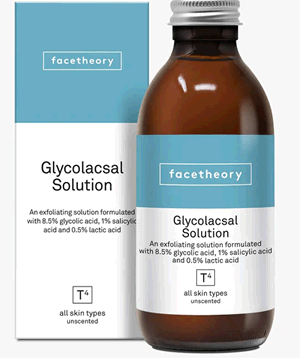Aim: In this part of the experiment you will take PLA cups and break them down by hydrolysis to form a antimicrobial cleaning solution of lactic acid.
Materials:
- PLA cups (5.0 g)
- Scissors
- electronic scale
-
Erlenmeyer flask
- 1.4 M NaOH in 1:1 ethanol/water (100 mL per group)
- Graduated cylinder
- Magnetic stirrer
- Watch glass
- 2 mL plastic pipette
- Hot plate with magnetic stirrer
- Ice bath
- 2 M hydrochloric acid (approximately 20-25 mL per group)
- pH probe or universal pH paper
- Paper towels
- Plastic spray bottles Optional Materials:
1. Cut a PLA cup into small pieces using a scissors. The smaller the pieces, the faster the reaction. Do not use any coloured parts of the cup or the lip/bottom corners (thicker portions) of the cup.
2. Measure 5.0 grams of the PLA pieces and place them in a clean 250 mL Erlenmeyer flask.
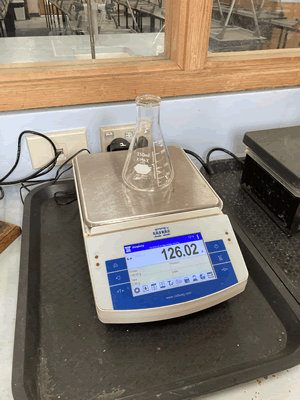
4. Add a magnetic stirrer to the flask.
5. Cover the flask with a watch glass to reduce evaporation, the watch glass will allow vapours of ethanol to vent when pressure builds up in the flask.
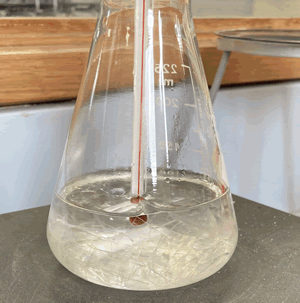
7. Continue heating until all of the PLA has dissolved (This usually takes 10 minutes). Do not leave unattended.
8. Remove from hot plate and let it cool on the counter, then continue to cool the mixture in an ice bath
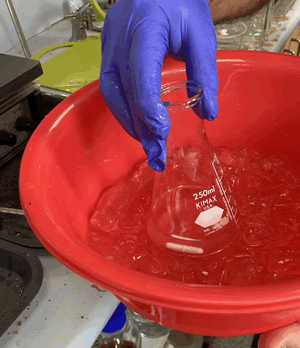
The colour of the lactic acid solution should be compared to the chart shown on the right.
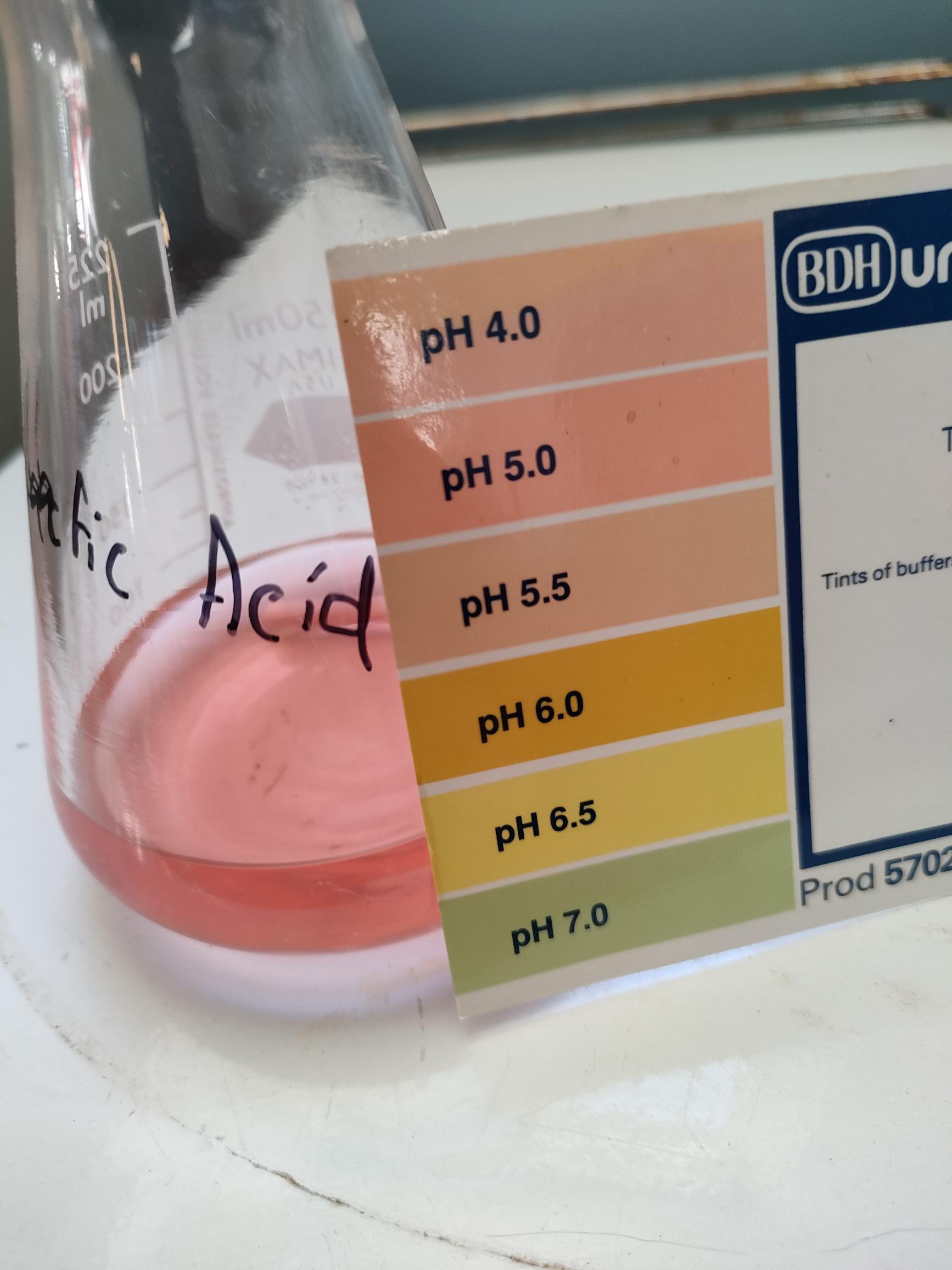
1. Consider the animation of the breakdown of polylactic acid (PLA) into its monomer form,as shown on the right.
a. What part does NaOH play in this reaction? Justify your answer.
b. What type of reaction is this? Justify your answer.
c. What type of reaction formed polylactic acid (PLA) from its monomers? Justify your answer.
d. Is PLA a type of polyester? Explain your reasoning.
e. Consider a single polyemric chain of lactic acid.
i. Draw the structural formula of the repeating unit.
ii Find the molar mass of the repeating unit.
iii. Assuming that the 5.00 gram sample of PLA consists of only a single
polymeric chain, calculate the approximate amount, in mol, of lactic
acid molecules.
f. Measure the volume of the final lactic acid solution using a measuring cylinder. Calculate the concentration, in mol/litre, of lactic acid in the solution.
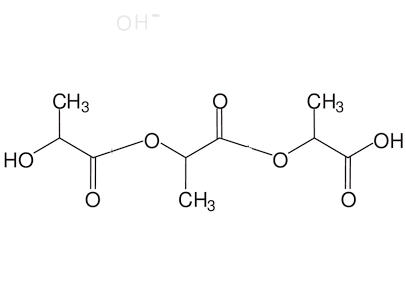
2. What is lactic acid used for in the cosmetics industry?
